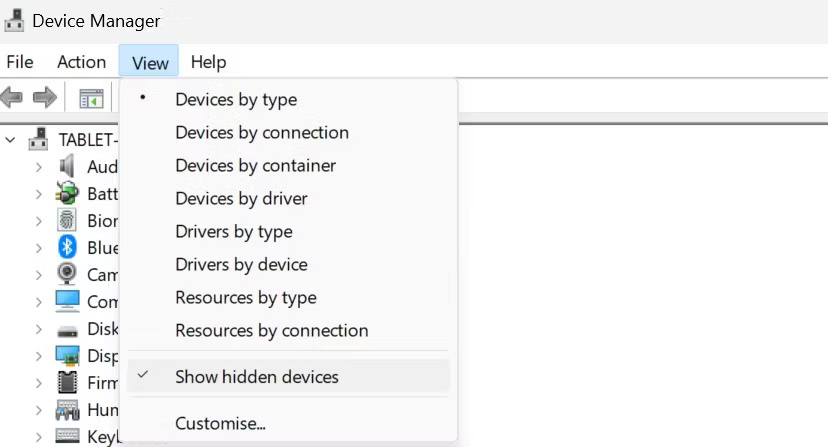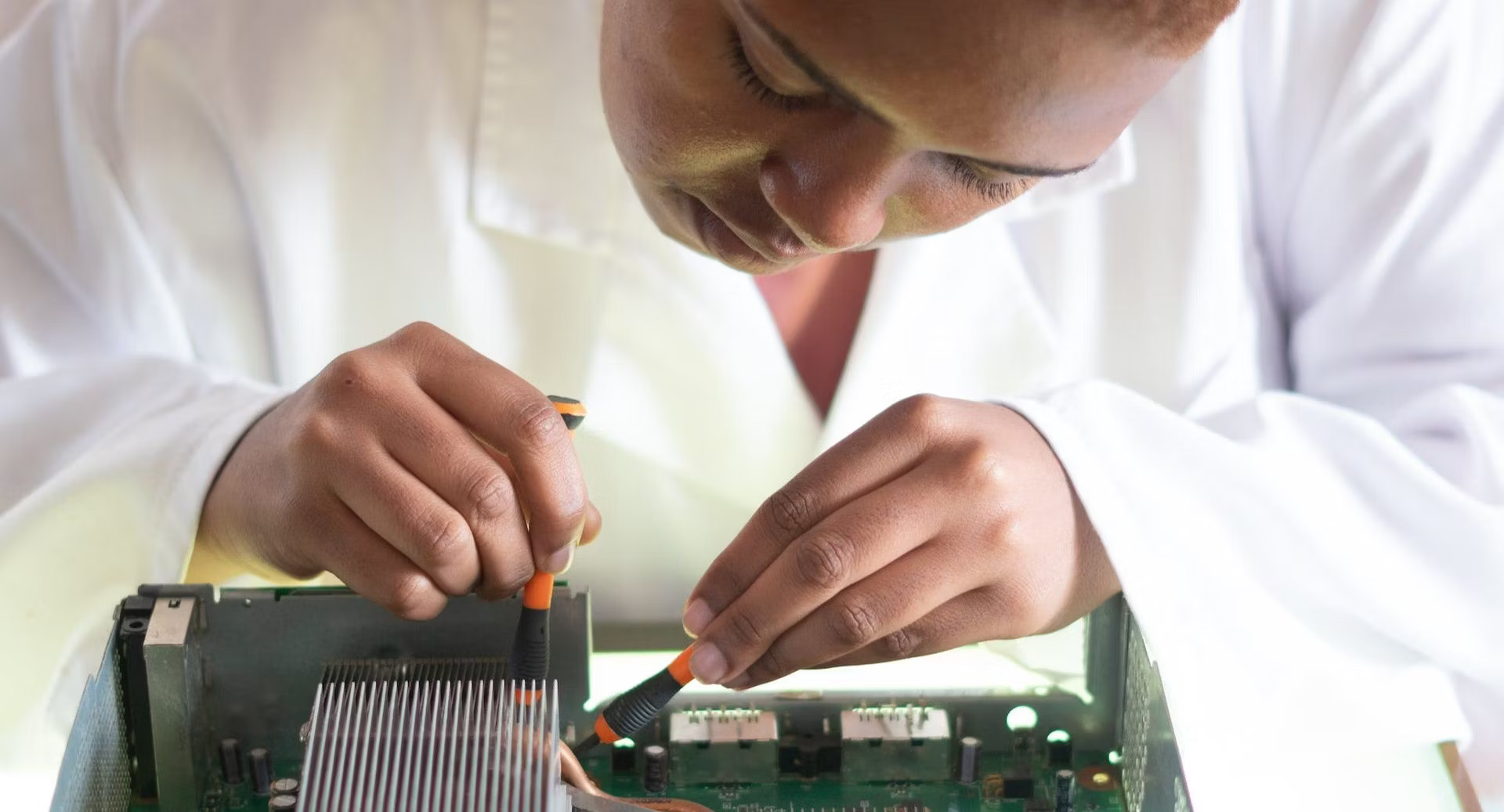7 ways to fix Windows error not detecting graphics card
Have you recently bought a new graphics card but your PC doesn't detect it? Or has your system suddenly stopped detecting a card you've been using for a while? From PSU to elusive software issues, many different factors can cause this problem. Here are some potential fixes you can try.
1. Do some preliminary checks
Start the troubleshooting process by performing these basic checks as they may resolve the issue immediately:
- Restart your device after killing active processes.
- Disconnect all peripherals connected to your device, especially phones and game controllers.
- Make sure yours is up to date, as an outdated BIOS may interfere with proper detection of your graphics card.
- Install any available pending Windows updates.
If none of the above preliminary checks resolve the problem, apply the remaining fixes.
2. Make sure the GPU is actually not detected
When your integrated graphics card is configured as the default option, your games and applications may not use your dedicated GPU. If you suspect your system doesn't recognize the dedicated GPU because games and applications don't use it, check to see if it's true. Press Win + R to open the Run dialog box, type "msinfo32" and press Enter .

In the System Information window , expand the Components category in the left sidebar and select Display . If your dedicated GPU is detected by the system, you will see its information here. If you don't see any information about it, your computer hasn't recognized it yet. So you need to investigate further to determine the underlying problem.

3. Make sure the graphics card is enabled
If your device seems to have detected the GPU but it's not working, check if it's disabled in Device Manager with these steps:
1. Right-click the Start button and open Device Manager.
2. Go to the View tab to show hidden devices. If you see a check mark next to Show hidden devices , the device is not hidden. If you don't see it, click Show hidden devices to display them.

3. Then, expand the Display adapters category .
4. Right-click your graphics card driver and select Properties . Go to the Driver tab and click the Enable Device button . If you see the Disable Device button , your card is enabled.

If you use dedicated graphics card software to manage GPU settings, make sure the card is not disabled there.
Tip : If your graphics card is enabled but the game or application is not using it, you should change the default graphics card. When you do that, the game will start using it for graphics processing.
4. Install GPU properly

If you are installing a graphics card for the first time, confirm the following:
- Your graphics card is securely placed in the PCIe slots on the motherboard.
- The GPU's power connectors are connected correctly and securely.
- Your monitor is connected to the GPU's video output, not the motherboard's.
- If the PCIe slot shows signs of dust, use a soft cotton cloth to clean it.
- Some users have solved the same problem by switching PCIe slots, so consider trying that.
If your graphics card appears to be installed properly but the problem persists, you should unplug the card and reconnect it. This may help fix any temporary issues affecting GPU detection.
5. Make sure the power supply is compatible
PSU compatibility is an essential factor to consider when purchasing a graphics card. In addition to having the same connector type, the PSU must also be able to provide the power your card needs. Insufficient power can lead to performance issues or even cause the device to be unable to detect the card.

Graphics cards typically consume between 100 and 300 watts on average. To evaluate whether your power supply can meet these requirements, check its capacity on the manufacturer's website. Calculate the total power demand of all components installed in your device, including RAM, GPU, SSD, etc.
If your net power requirements exceed your PSU capacity, you must upgrade your power supply. Even if it barely meets the requirements, consider upgrading to get the best performance. However, if you have a PSU with a higher capacity than required, you can confidently proceed to the next step.
6. Update or reinstall the driver
If you are installing a GPU for the first time or have not recently updated your GPU driver, you should download and install the latest driver from the GPU manufacturer's website. If the driver is in executable format, double-click the file and proceed with the installation by following the on-screen instructions. If manual installation is required, use Device Manager.
Right-click the Start button , select Device Manager , expand the Display adapters category , right-click the relevant driver, and select Update driver . Select Browse my computer for drivers , navigate and select the driver from your computer, and follow the on-screen instructions to complete the installation.

If the drivers are fully installed and updated, consider uninstalling and reinstalling them as this often resolves hardware detection issues. To uninstall a device, right-click the driver and select Uninstall device .

Then, visit your GPU manufacturer's website, download the latest driver, and follow the instructions above to install it properly.
7. Make sure the graphics card is not defective
If none of the previously suggested solutions solve your problem, the problem may lie with the graphics card. Strange fan noises, frequent PC crashes, graphics-related errors, frequent blue screens of death, and sudden drops in gaming performance are all signs of a malfunctioning graphics card.

If you are using a PC, disconnect and remove the graphics card. Connect it to another device if available or seek help from a friend. If your GPU is working on another device, the problem may be with the PSU, RAM, motherboard, or other components of the main computer.
If the graphics card also doesn't work on the other device, that device may be defective. So check it out or replace it with a new graphics card that fits your budget.
You should read it
- How to fix Netflix errors that don't work on Windows 10
- How to fix windows 10 errors
- How to fix some errors on Windows 10 Creators
- How to fix Windows 8 error not connected to Windows Store
- How to fix the 'We'll Need Your Current Windows Password' error on Windows 10/11
- How to Fix 'Repairing Disk Errors' on Windows
 6 ways to fix SSD drive not showing error in Windows
6 ways to fix SSD drive not showing error in Windows Error when starting the computer, how to fix it?
Error when starting the computer, how to fix it? Intel hd graphics control panel lost - Not difficult to find
Intel hd graphics control panel lost - Not difficult to find Suggested solution when the computer reports an EFI Shell version error
Suggested solution when the computer reports an EFI Shell version error Cannot open Local Group Policy Editor, quick fix
Cannot open Local Group Policy Editor, quick fix Windows Explorer crashes, how to handle errors extremely quickly
Windows Explorer crashes, how to handle errors extremely quickly